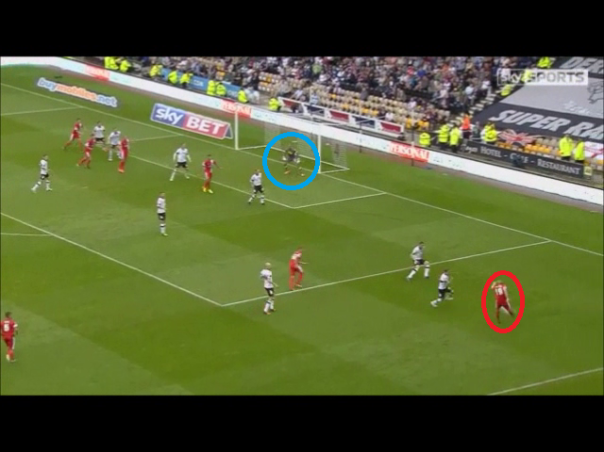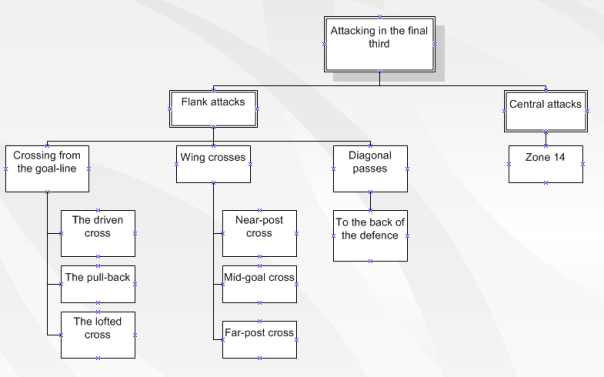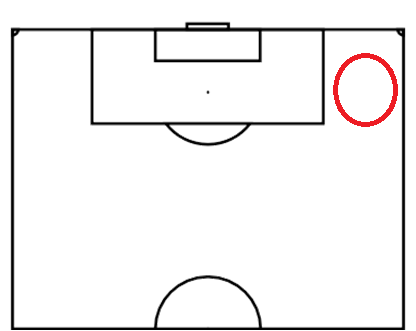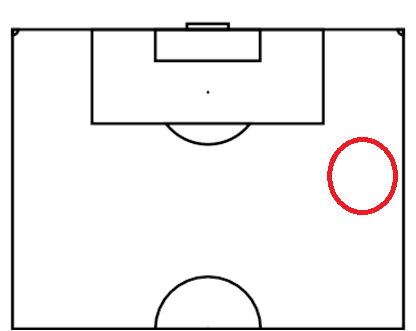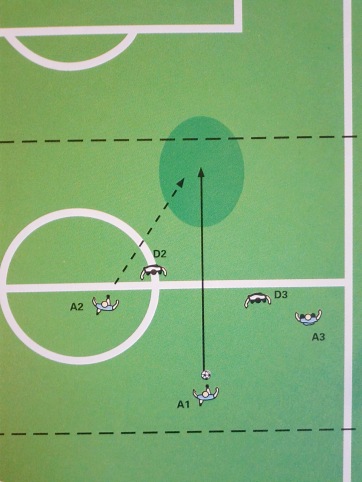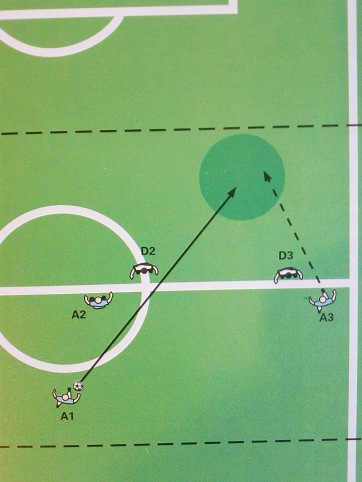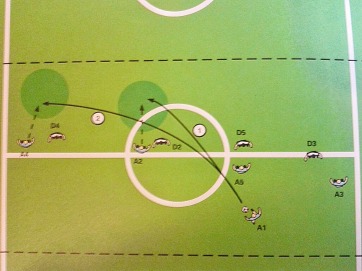Monthly Archives: January 2014
Football Basics – Factors to be considered in attacking by crossing
In my opinion, there are 5 factors to be considered in attacking by crossing:
- The space available
- The position of the defending players
- The position of the attacking players
- Technique for crossing the ball
- How to attack the crossed ball
1. Space Available
Space has two different meanings in this factor. Firstly, it means the space in the prime target area. As I mentioned last week, the crosses hitting to the back of the defence is the best option because it is difficult for the defenders to clear. Therefore, if there is space in the prime target area, the ball should be crossed into that space as soon as possible. Secondly, the second meaning is about the space available on the flank for the winger to make a cross. In other words, it is hard for the winger to cross the ball if he is tightly marked and he has no space at all.
2. The position of the defending players
In this factor, there are 3 types of defenders to be considered:
- Defenders in the prime target area
- Immediate opponent: the defender’s marking will affect the timing and technique of the cross
- Goalkeeper: it will affect the placement of the delivery of the ball. Firstly, the position of the ball affects the position of goalkeeper. The nearer the ball is to the Goalkeeper; the more likely it is that the goalkeeper will be in the front half of his goal.
In the above figure, the ball is in the wide area (red) so the goalkeeper (blue) stands near to the near post.
In the above figure, the ball (red) is in a deeper area so the goalkeeper stands further from the near post and goal line.
No doubt, if the goalkeeper is covering the near post, it would be better to cross the ball into the far post of the prime target area because the goalkeeper can’t see the players in the far post, vice versa.
3. The position of the attacking players
After considering both space available and the position of the defenders, the next thing is to consider the position of the attacking players because they are the players to exploit the space. There is no point in crossing the ball to space without attacking players to take advantage of it
4. Technique for crossing the ball
The best technique in crossing the ball is a swerve kick with the inside of the foot because of two reasons:
- The swerve will tend to take the ball away from GK
- It let the player put considerable pace on the ball without sacrificing accuracy
5. How to attack the crossed ball
In this factor, there are 3 things to be considered:
- Angle: it should be at least 90 degrees to end up with a good shot. In 90 degree, the player comes across the line of flight. With even greater angle, the player has a better angle to see the ball which makes him a better chance of making a good contact with the ball.
- Timing: the attacking players should come late but at speed. A common mistake of strikers is that they go into the target area too early. It gives time for the defenders to recover their positions and deny the space available of strikers. This is a clip I find on youtube which shows a good timing of attack from Ronaldo. The cross was made by Beckham.
http://www.youtube.com/watch?v=F6QyPrwDwko
- The contact: the contact should be the top half of the ball because the aim is to drive the ball downwards to make it more difficult for the goalkeeper to save it. In terms of which part of the body should be used, I prefer using the head rather than the feet because it requires little adjustment to the running stride.
Reference
HUGHES, C., 1987. Soccer Tactics and Skills. Great Britain: Queen Anne Press
HUGHES, C., 1990. The Winning Formula. London: William Collins Sons & Co Ltd
Football Basics – Crossing
Why crosses are essential?
When a team attacks in the attacking third, there are two ways to attack generally: central attacks and flank attacks. Due to the importance of zone 14, the majority of the defenders would concentrate on defending the central area. The defenders’ aim is to deflect attack toward the flanks which is away from the danger area (zone 14). As a result, a good attacking team should be able to attack effectively down the flanks. The two flanks are the areas where a team can expect to find most space in the attacking third of the field.
Figure 1. Organisation chart showing the options of attacking in the final third
Generally, I divide flank attacks into three main categories:
- Crossing from the goal-line (It happens usually when the winger beats the defender(s) by dribbling or pace and run towards the goal-line)
- Wing crosses (The crosses are from the wide or deep area along the touch line)
- Diagonal passes (It can be classified as passing or crossing because I think it is a combination of both depending on where the pass is made. It is very similar to crossing when it is used in flank attacks from wide areas to exploit the space between the rearmost defender and the goalkeeper)
What is the prime target area?
Charles Hughes suggested the concept of “prime target area” for the wingers to cross the ball. He argued the most successful type of crosses is to cross the ball to the back of the defense and into the prime target area. The prime target area extends out 8 yards, from 2 yards inside the 6-yard box to the penalty spot, and across 20 yards, the width of the 6-yard box.
 Figure 2. The prime target area (red) in the penalty box
Figure 2. The prime target area (red) in the penalty box
Where to release the ball?
There are three different positions to release the ball in crossing: goal-line, wide area and deep area.
Goal line:
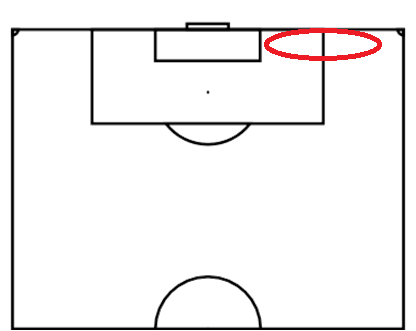 Figure 3. The goal-line area to deliver crosses
Figure 3. The goal-line area to deliver crosses
This area is just inside or outside the penalty area near the goal line. As mentioned before, it is difficult for the winger to get into this area unless he can beat the defenders by dribbling or by pace. Moreover, it is rarely possible for the winger to play the ball to the back of the defense because the defenders will position themselves in and around the 6-yard box
Wide area:
Figure 3. The wide area to deliver crosses
This area is within a few yards of the touch line and next to the penalty box. Usually the winger makes cross on the run without halting his stride.
Deep area:
Figure 3. The goal-line area to deliver crosses
This area is just inside the attacking third of the field. Therefore, it is more suitable for the full backs to cross the ball.
The organisation chart in figure 1 is a guideline for the topics I am going to cover in the following few weeks. Since zone 14 was discussed before, I will focus on three types of flank attacks.
Reference
HUGHES, C., 1987. Soccer Tactics and Skills. Great Britain: Queen Anne Press
HUGHES, C., 1990. The Winning Formula. London: William Collins Sons & Co Ltd
